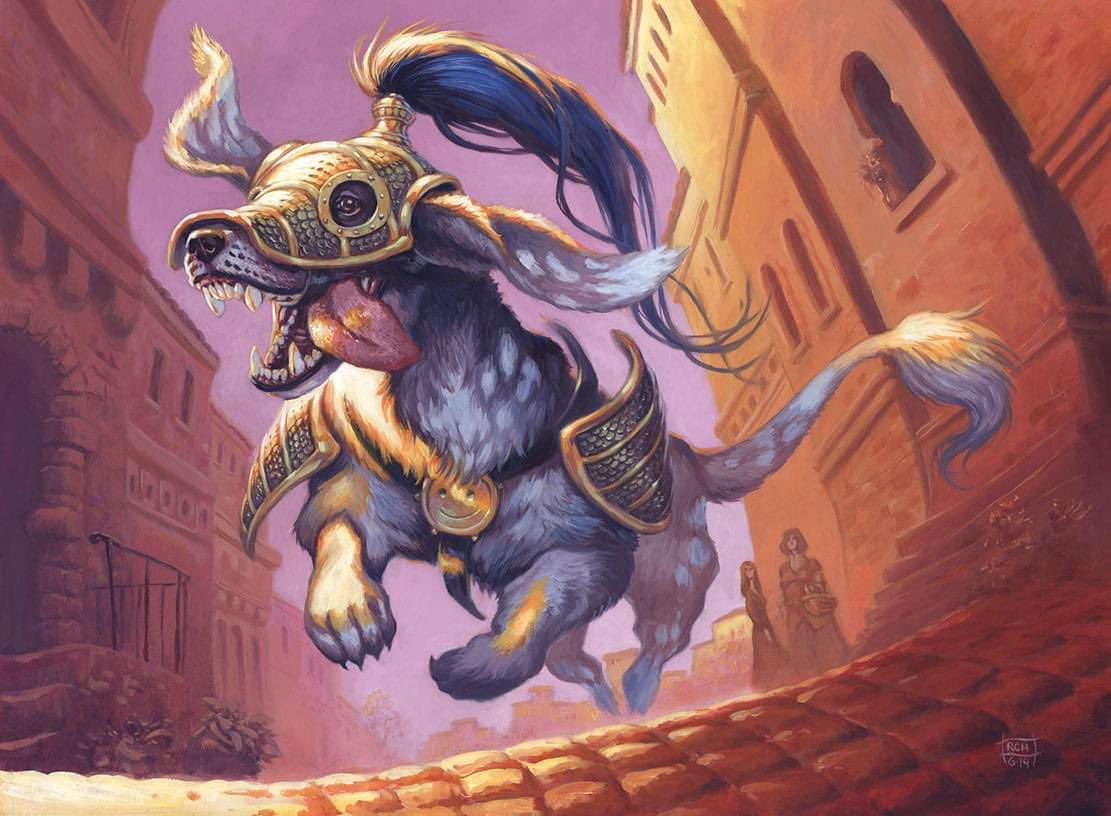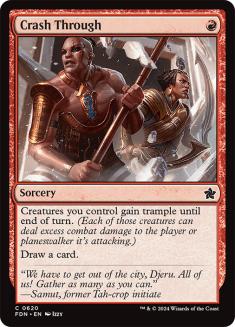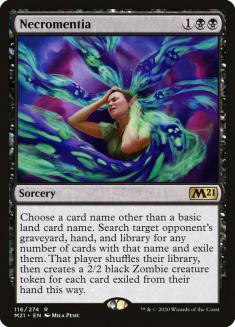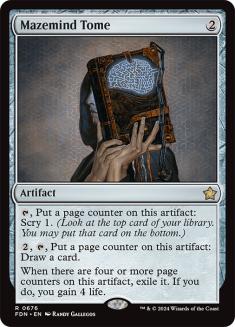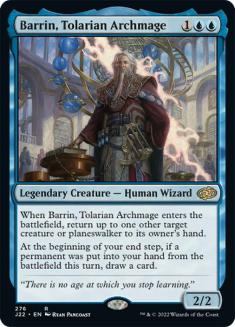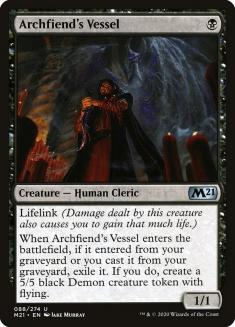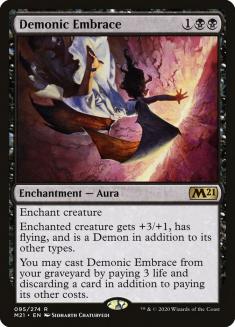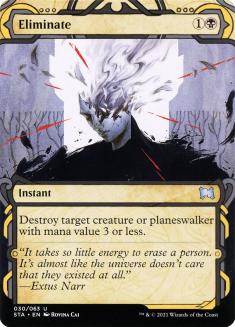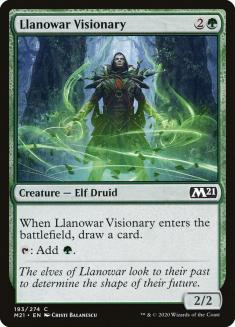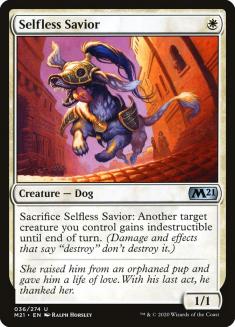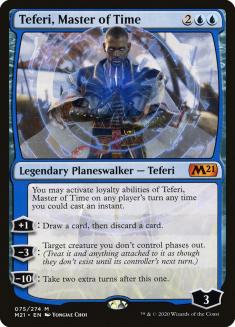New Magic sets generate a lot of their excitement through their potential for change. Sweet cards and nostalgia-inspiring reprints will keep us stoked through preview season, but when it’s time for release, it’s the capacity to immediately shake up the format that matters more than anything else. With the release of Core Set 2021, the barriers to change might be the greatest they have ever been. Not only is the format at its peak size, but cards of unprecedented power have defined Standard for the past year. Even after a previously unthinkable number of Standard bans, the cards left behind are no slouches.
Teferi, Time Raveler. Wilderness Reclamation. Witch’s Oven. These cards render entire styles of play obsolete. With the release of Core Set 2021, it really doesn’t matter what cards are abstractly powerful. Ugin, the Spirit Dragon might have the biggest impact during its time in Standard, but if Wilderness Reclamation presently makes it a bad bet, this information is not useful to you as you get ready for the coming weeks’ SCG Tour Online qualifiers.
Instead, I want to focus on the cards that matter Day 1 of the new format. Let’s look at the Top 10 Core Set 2021 cards that can alter the metagame right out of the gates.
10. Crash Through
People who spend their lives building decks are already nodding right along with me. In every format there has to be some deckbuilding “glue.” These cards serve as the foundational building blocks and allow ideas built around synergies to jell. Present Standard is focused on haymaker Magic not only because of the absurd power level of the expensive spells, but also because synergistic approaches have missed key one-mana enablers.
Arclight Phoenix has had moments of brief resurgence, but time after time, reality caught up to the deck. The baseline power level was there in the best games, but the execution was just far too inconsistent. Crash Through is a Modern-power-level card, and while it doesn’t bust down the gates for Arclight Phoenix, it certainly demands another look.
I’d say the same about Dreadhorde Arcanist. Here’s a card that can reach back to Legacy when it finds the appropriate support. Crash Through alongside some other new forms of protection appearing later in this list have me wondering if it’s time to get Dreadhorde Arcanist back together with Feather, the Redeemed. A rough draft:
Creatures (18)
- 4 Dreadhorde Arcanist
- 4 Tenth District Legionnaire
- 4 Feather, the Redeemed
- 2 Lurrus of the Dream-Den
- 4 Selfless Savior
Lands (10)
Spells (32)

Indestructibility is really starting to pile up for this deck with the addition of Selfless Savior. With little fear of sweepers, we can turn a lot more of our focus towards winning a race and creating virtual redundancy in key pieces. Maindeck Lurrus of the Dream-Den and a couple of card advantage engines mean we can realistically play long games too.
The question is one of scaling, and if decks like Temur Reclamation and Orzhov Doom scale to the late-game too quickly, there’s not a lot here that’ll prevent or contend with that. Maybe a sideboard plan loaded with Disenchants and Vryn Wingmare can make a difference?
9. Necromentia
The process of learning Magic is wonderful. First, you must memorize about a thousand maxims to play the game with anything approaching efficiency. Then, to get better, you must figure out all the times you’re supposed to ignore those maxims.
Necromentia is a bad Magic card. And I really don’t care about this fact. There are times when Necromentia and its ilk are called upon to do an extremely specific job, and if they weren’t accomplishing that role, the decks they appear in would have unwinnable matchups.
The breakout deck of this past weekend’s Players Tours was clearly Orzhov Yorion.
Creatures (15)
Planeswalkers (5)
Lands (29)
Spells (31)
- 6 Plains
- 3 Mortify
- 4 Oath of Kaya
- 4 Doom Foretold
- 3 Glass Casket
- 4 Treacherous Blessing
- 4 Agonizing Remorse
- 3 Elspeth Conquers Death
Sideboard

The deck absolutely murdered the vast majority of decks in the field… except for the de facto best deck, Temur Reclamation. If it had figured this matchup out, there is a good chance that the innovative pilots who brought this deck to the table would have had an all-time performance on their hands. Is it possible the answer is as simple as Necromentia naming Expansion // Explosion or Wilderness Reclamation?
Probably not. Temur Reclamation always has new moves to make, and Nightpack Ambusher has already facilitated a lot of shifting plans. However, I do think forcing Temur Reclamation to make adaptations is exactly how you start metagame churn. If Necromentia is enough to make even a modest impact in the matchup, the ripple effects will be huge.
8. Mazemind Tome
My first look at Mazemind Tome left me underwhelmed. This feels like outdated small-ball Magic, and I just didn’t understand why you’d waste your time with Mazemind Tome when you could just be playing Growth Spiral instead.
The truth is you wouldn’t. Mazemind Tome instead enables a class of decks that couldn’t exist without some way to produce land drops in the early-game and card-advantage in the late game. Decks like Big Red or Mono-Black Control can’t even be considered without this card. Making your third and fourth land drops while still being able to mitigate flood is an absolute requirement in today’s game.
I wrote about a Big Boros deck a few weeks ago and foolishly excluded Mazemind Tome. Today, I think Mazemind Tome is the only reason this deck can exist.
Creatures (6)
Planeswalkers (7)
Lands (16)
Spells (31)

Much like maindeck Lurrus, maindeck Yorion, Sky Nomad feels criminally underplayed. More and more of my decks feature value Yorions, and the card plays great with Mazemind Tome.
7. Barrin, Tolarian Archmage
I had plenty to say in my article on Barrin, Tolarian Archmage last week, but I think I undersold this card’s potential impact on older archetypes. I’m still excited about Barrin, Tolarian Archmage’s overpowered end-games in combination with Yorion, but I ignored just how close Mono-Blue Flash was to being a deck after the release of Ikoria: Lair of Behemoths. Barrin, Tolarian Archmage brings some cute synergies to the table; more importantly, it just functions as a simultaneous source of tempo and an out to Teferi, Time Raveler. Blue tempo decks have historically preyed on Standards like the one we have now, but Teferi has thrown a wrench in that plan. Let’s see if Barrin, Tolarian Archmage was the missing piece.
Creatures (23)
- 4 Faerie Miscreant
- 4 Spectral Sailor
- 4 Brineborn Cutthroat
- 4 Brazen Borrower
- 4 Sea-Dasher Octopus
- 3 Barrin, Tolarian Archmage
Lands (2)
Spells (35)

6. Archfiend’s Vessel
Look, the Rakdos Sacrifice decks are good-ish. They’ve got fine results. But they’ve always felt limited by opposing plans. They require the format to build their decks in a way that can’t punish you for a lack of closing speed. At the same time, the best Rakdos Sacrifice draws are not built on any individual card’s power. They ask that your puzzle pieces come together in the right order. This means they mulligan poorly and play far too many close games for my liking. I think Archfiend’s Vessel can change all of that.
You don’t need much of a reason to play cards like Call of the Death-Dweller or Lurrus of the Dream-Den. These cards are good on their face. I look at Archfiend’s Vessel like an improved version of Dreadhorde Butcher. Putting the card in your deck opens up aggressive draws, but unlike Dreadhorde Butcher, it still enables your very best starts, which will always revolve around Priest of Forgotten Gods. I can’t wait until the first time I force a sacrifice and make a pair of flying 5/5s on Turn 3 with this list.
Creatures (25)
- 4 Gutterbones
- 4 Priest of Forgotten Gods
- 4 Mayhem Devil
- 4 Cauldron Familiar
- 2 Woe Strider
- 3 Lurrus of the Dream-Den
- 4 Archfiend's Vessel
Lands (18)
Spells (17)

5. Demonic Embrace
When Gerry Thompson and I got together to make our Core Set 2021 Top 10 list for the Arena Decklists Podcast, I was positive that he was going to be dumbfounded that I had Demonic Embrace high on my preliminary list. Imagine my surprise when he had it ranked just as highly.
I feel like Demonic Embrace went way under the radar during preview season, but this card is just exactly what Mono-Black Aggro has been missing this entire time. The archetype produces ample fodder in the late-game with options like Whisper Squad or Gutterbones. It’s just challenging to get those bodies to be meaningful in the face of something like Uro, Titan of Nature’s Wrath. Old versions of Mono-Black were forced to expand battlefields wider and wider in hopes of forcing through the last bits of damage, only to be punished inevitably by Shatter the Sky or Deafening Clarion.
Demonic Embrace solves this problem in a single slot, and gives the deck staying power it’s been sorely lacking. I’ll share Gerry’s list and I encourage you to read his article, because he and I both believe this archetype to be a great starting point for Week 1 Standard.
Creatures (31)
- 4 Kitesail Freebooter
- 2 Spawn of Mayhem
- 4 Gutterbones
- 4 Rotting Regisaur
- 4 Knight of the Ebon Legion
- 3 Rankle, Master of Pranks
- 3 Murderous Rider
- 4 Stonecoil Serpent
- 3 Blacklance Paragon
Lands (23)
Spells (6)
Sideboard

4. Eliminate
Spot removal has been exceedingly rare for months now. Part of that has been the metagame, but a larger part has been the inefficiency of the removal tools. Teferi, Time Raveler and Narset, Parter of Veils have been terrorizing the format for far too long and now, at the closing end of their reign, at last we have a removal spell that isn’t straight-up embarrassing when facing down these omnipresent planeswalkers. Granted, it’s not an exchange you’ll be thrilled with most times, as you still end up down a card, but we take what we can get. It’s funny that the planeswalker that actually gets weakened the most by the printing of Eliminate is Oko, Thief of Crowns – don’t get any ideas, Wizards of the Coast (WotC).
Little increases in versatility add up though. The biggest gainers from the printing of Eliminate are classic midrange strategies. While these don’t exist presently, cards like Scavenging Ooze and Eliminate are starting to make a case for their return.
3. Llanowar Visionary
There are two enticing ramp spells in Core Set 2021. In a battle of straight-up card quality between Cultivate and Llanowar Visionary, I’d give the nod to Cultivate. Long-term, it’s apt to be the more impactful print. However, in the current metagame, with the current card pool, I actually like what Llanowar Visionary is capable of slightly more. Teferi, Time Raveler will remain an omnipresent consideration until it leaves the format, and I appreciate Llanowar Visionary’s ability to get on the battlefield and threaten Teferi’s loyalty while presenting a horrible bounce target due to its enters-the-battlefield clause.
Furthermore, clock matters right now. You can’t give Temur Reclamation or Orzhov Doom unlimited time to scale up. While a 2/2 body isn’t turning the tide on its own, it does have me thinking about how its presence changes things for Finale of Devastation-based Simic Ramp decks.
Creatures (22)
- 4 Solemn Simulacrum
- 3 Hydroid Krasis
- 1 End-Raze Forerunners
- 4 Paradise Druid
- 2 Arboreal Grazer
- 1 Cavalier of Thorns
- 3 Uro, Titan of Nature's Wrath
- 4 Llanowar Visionary
Planeswalkers (4)
Lands (12)
Spells (22)

Obviously heavily inspired by the successful Simic decks of Mythic Championship VII, this deck supposes that the Elemental package those decks were built on was a liability, not a necessity. We’ve added a lot of random power to our mana creatures, creating the real possibility of a clock in the absence of End-Raze Forerunners. The level of redundancy here is incredible, as so much of our ramp is both replacing itself and allowing Finale of Devastation to go off. A lot of the numbers here will require tuning, but I’m excited about what this deck offers.
2. Selfless Savior
Selfless Savior simultaneously unlocks a lot of strategies. It’s yet another passable one-drop to pair with Venerated Loxodon. It allows us to explore protect-the-queen strategies with expensive but vulnerable threats like Baneslayer Angel. The most exciting thing to me, however, is its ability to keep Lurrus of the Dream-Den alive.
While this would have mattered only to a pretty small subset of decks prior to the companion changes, its no longer strictly incorrect to play without a companion. This means a lot of decks can pick up a maindeck Lurrus and use Selfless Savior to keep it on the battlefield.
Selesnya Auras deserves another look. You saw an updated Boros Feather list above. I’m quite interested in whether Selfless Savior can make Orzhov Sacrifice capable of competing with the Rakdos and Jund lists.
Creatures (31)
- 2 Midnight Reaper
- 1 Tithe Taker
- 4 Gutterbones
- 4 Priest of Forgotten Gods
- 4 Cruel Celebrant
- 4 Woe Strider
- 3 Fiend Artisan
- 3 Lurrus of the Dream-Den
- 4 Selfless Savior
- 2 Archfiend's Vessel
Lands (19)
Spells (10)

Eliminate is good enough to get me looking at playing removal spells again, and I think it’s a critical piece of the puzzle if this deck is ever going to stand up to a Mayhem Devil. It’s hard to imagine this supplanting Rakdos out of the gate, but the combo kills this deck produces sidestep a lot of what the format is about. If staying power is worth more than explosiveness, I like Orzhov’s chances.
1. Teferi, Master of Time
Some cards need to be cast exactly once before you understand how powerful they are. I think a lot of people are going to find themselves surprised by the impact Teferi, Master of Time has on the game.
The timing windows of planeswalkers typically leaves them vulnerable to haste and flash threats. Teferi, Master of Time shores up these vulnerabilities and gives you a potential window to find an answer to something like a Shark token. By addressing this one weak point, the door is open for decks whose sole goal is to resolve and protect a planeswalker to come back into the metagame.
When Teferi does get to spend time on the battlefield unbothered, its +1 ability will pull you ahead far faster than you would expect. At two free draws per turn, answers to future problems will be at your beck and call. Teferi is an old-school planeswalker. If you can cast it at parity, there is a large chance it is good enough to carry you to victory on its own.
Creatures (3)
Planeswalkers (10)
Lands (12)
Spells (35)

While this set (thankfully) lacks some of the power of the last few releases, it’s loaded with impactful new cards and reprints. While I expect many of the same players to remain at the apex of the metagame, Core Set 2021 has done an admirable job of providing some new challengers with a puncher’s chance.

